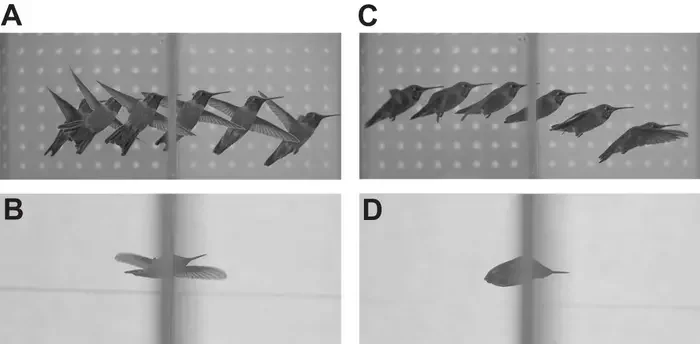High-speed cameras finally reveal how acrobatic hummingbirds fly through narrow gaps
Researchers found birds use two unique strategies to transit through small gaps
Your support helps us to tell the story
From reproductive rights to climate change to Big Tech, The Independent is on the ground when the story is developing. Whether it's investigating the financials of Elon Musk's pro-Trump PAC or producing our latest documentary, 'The A Word', which shines a light on the American women fighting for reproductive rights, we know how important it is to parse out the facts from the messaging.
At such a critical moment in US history, we need reporters on the ground. Your donation allows us to keep sending journalists to speak to both sides of the story.
The Independent is trusted by Americans across the entire political spectrum. And unlike many other quality news outlets, we choose not to lock Americans out of our reporting and analysis with paywalls. We believe quality journalism should be available to everyone, paid for by those who can afford it.
Your support makes all the difference.Researchers have finally unravelled the unique strategies hummingbirds use to fly through small gaps while being unable to pull their wings in by nature.
Most small bird species that feed on fruit, seeds, and nectar negotiate small gaps in foliage to secure a meal by pulling their wings in and folding them closer to their bodies as they fly through.
However, despite being agile aviators capable of flying backwards, hummingbirds have lost the ability to fold their wings at the wrists and elbows.
Scientists have been intrigued for years how the tiny birds then are able to penetrate small gaps that are barely half a wingspan wide.
“Unless hummingbirds implement distinctive strategies to transit narrow apertures, they may be unable to enter gaps less than one wingspan wide,” Marc Badger from the University of California, Berkeley (UCB) said in a statement.
In the new study published on Thursday in the Journal of Experimental Biology, scientists analysed Anna’s hummingbirds (Calypte anna) in a specially built flight arena where the birds where incentivised to fly through a small gap.
“We set up a two-sided flight arena and wondered how to train birds to fly through a 16 cm2 gap in the partition separating the two sides,” Dr Badger explained.
The team only refilled a flower-shaped feeder with a sip of sugar solution once the bird had returned to the feeder opposite to encourage them to fly to and fro.
Using high-speed cameras, researchers filmed the birds’ manoeuvres as it negotiated the gap, which was altered with a series of smaller oval and circular apertures ranging in height, width and diameter from 12 to 6 cm.
Scientists also wrote a computer programme to methodically track the position of each bird’s bill as they approached and passed through each aperture.
They found that the birds used two unique strategies.
In one, the birds often hovered in front of the gap first to assess it first, before travelling through sideways.
They would reach forward first with one wing while sweeping the second wing back, “almost making the shape of a cross”.
The birds would dexterously do this while still fluttering their wings to fly through the aperture and then swivel forward to continue on their way, scientists say.
In another approach, the birds swept their wings back, pinning them to their bodies, and shot through the beak first like a bullet.
They would then sweep their wings forward and resume flapping again once they pass safely through the gap.

Researchers found that the birds that were travelling sideways tended to fly more cautiously than those that shot through the apertures beak first like a bullet.
But as the birds became more familiar with the apertures over several flybys, the cautious-flying ones too began taking up the bullet-approach.
However, for the smallest aperture, which was half the size of their wingspan, almost every bird took the beak-first approach to dart through the gap.
The findings suggest hummingbirds use either the sideways option when they want to take a more cautious approach, and transition to a beak first strategy as they become bolder.

Join our commenting forum
Join thought-provoking conversations, follow other Independent readers and see their replies
Comments